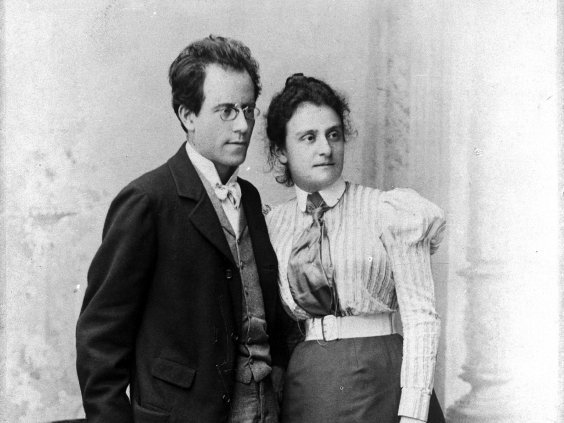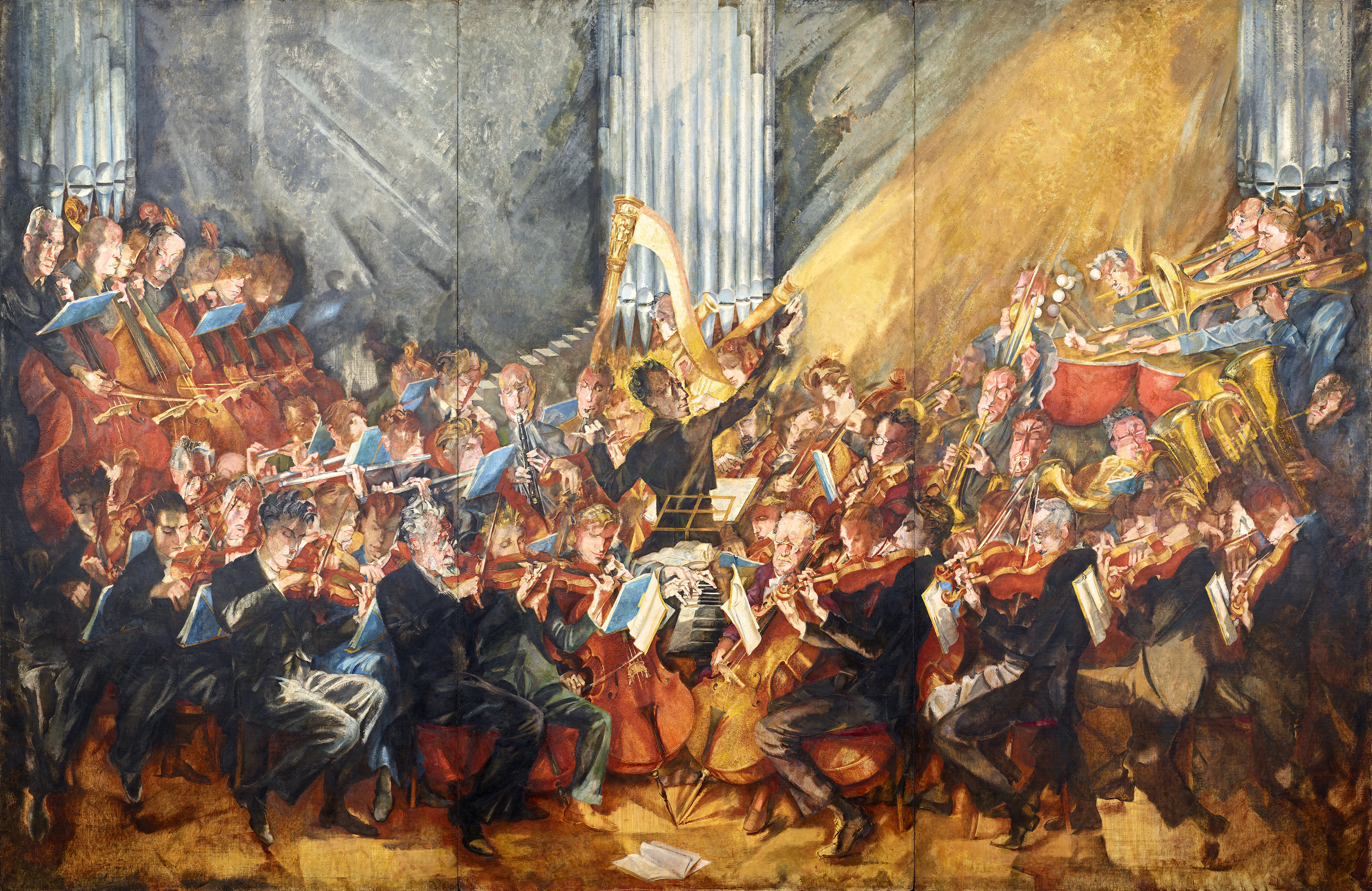- History

Should she really say yes? The 22-year-old Alma, idolised by Vienna's avant-garde artists and a talented composer herself, is faced with a difficult decision. Gustav Mahler, the up-and-comer from the provinces, offers her a life full of music, but no artistic equality. About one of the most famous love affairs in classical music.
Should she really accept his offer of marriage? At twenty-two, Alma was in the first flush of youth, an extraordinarily beautiful and charismatic woman worshipped by Vienna’s avant-garde artists, who were frequent visitors to the home of her stepfather, the painter Carl Moll. She had exchanged her first kiss with Gustav Klimt, while her composition teacher, Alexander von Zemlinsky, was hopelessly infatuated with her.
She could have had any of them. So why should she choose Mahler, the son of an innkeeper, a social climber from the provinces, who had been born in Kalischt (modern Kalištĕ) in Bohemia and who had grown up in Iglau (modern Jihlava) in Moravia? At their first encounter in Bertha Zuckerkandl’s salon in the autumn of 1901, she thought him a “philistine” with “wretched taste”, little interest in painting, no sense of style and a conventional approach to furnishing his home, which was filled with its heavy historical items. In short, Mahler was a member of the very bourgeoisie that the artists of the Vienna Secession hated, artists with whom Alma consorted as the quintessence of fashionable society.
“He has absolutely no time for my art but only for his own.”
Not to mention the age gap: Mahler was almost a generation older than Alma – a full nineteen years her senior. But Mahler was a musician, a conductor of international stature and since 1897 the director of the Vienna Court Opera. And music was Alma’s great love. She was an excellent pianist and had been writing music since she was sixteen; her output included songs and instrumental pieces, and she had even started work on an opera.
Mahler, too, was a composer, even if few of his contemporaries understood or appreciated his music. Alma was not one of the few. “He has absolutely no regard for my art, but much for his own. And I have no regard for his art, but much for my own. That’s how it is!”, she wrote in her diary. Despite this, Alma believed that as a couple they could inspire one another creatively.
The two had known each other for barely three weeks when Mahler proposed to Alma, while making it unmistakably clear that artistic equality was not an option for him. “A husband and wife who are both composers: how do you envisage that? Such a strange relationship between rivals: do you have any idea how ridiculous it would appear? Can you imagine the loss of self-respect it would later cause us both?”
For Mahler, it was beyond doubt that “if we are to be happy together, you will have to meet my needs – not as my colleague, but as my wife!” This letter runs to twenty pages and spells out Mahler’s view of married life. Alma’s role in such a relationship was not to pursue an active, creative career but to serve her husband’s every need.
Mahlers Symphonie Nr. 5 (Adagietto) mit Gustavo Dudamel
Reduced to the status of a housekeeper
Despite this, Alma agreed to Mahler’s demands and married him in Vienna only four months after their first meeting. From then on his young wife’s routine was entirely dictated by his own. For his part, Mahler was a workaholic who had had practically no private life before he married Alma. In July 1902 she wrote in her diary: “A terrible longing for a human being who thinks of me and who helps me to find myself. I’m reduced to the status of a housekeeper.”
Alma’s emotions veered wildly. “I’m now pining away, such is my love for him, but the very next moment I feel nothing, nothing.” Elsewhere we read: “I’ve never wept as much as I have now that I’ve got everything that a woman can strive for.” Alma was expecting a child and brought the first of two daughters into the world, but motherhood brought her no joy. And she was just as unhappy with her role as a middle-class housewife.
“I’m suddenly conscious of the fact that I’m leading only a sham existence,” she noted. “My ship has reached port. But it’s taking in water.” At other times she would glorify her torments: “I now have a goal, which is to sacrifice my own happiness to that of another person and perhaps find happiness of my own in that way.” It was a false hope.
Mahler himself generally found only one way to express his profound and sincere love – through his music. He set Friedrich Rückert’s poem “Liebst Du um Schönheit?” (“If you love for the sake of beauty”), describing it as “the most private” expression of his feelings for his wife. For her part Alma wrote in her diary: “I often feel how little I am and how little I have in comparison to his own immeasurable wealth.”
The Adagietto – the slow movement from Mahler’s Fifth Symphony – was also intended as a present for Alma, at least according to the conductor Willem Mengelberg: “Instead of a letter he sent her this manuscript, but with no message attached to it. She understood. Both of them told me this.”
The idea that this is a musical declaration of love receives internal support from the fact that at the emotional climax of the movement Mahler introduces the Glance Motif from Wagner’s Tristan und Isolde, which marks the moment when the music drama’s two protagonists realize that their fates are ineluctably linked.
There is a filigree delicacy to this Adagietto, which is scored for strings and harp alone, investing the music with a weightless, somehow asexual character. The movement heading is not “Adagio” (“leisurely”) but its diminutive, “Adagietto”, much as Mahler always used a diminutive of Alma’s name in their correspondence: Almschili.
A sudden interest in Alma’s compositions
In her diary in 1903, Alma noted: “I know that in the outside world the man has to display his peacock’s tail, whereas at home he wants to ‘rest’. I have no one to whom I can pass on my wealth. Instead, I’m just vegetating.” Mahler’s ailing wife found it increasingly necessary to take the waters at health resorts. At Tobelbad in Styria in 1910 she met the architect Walter Gropius, who went on to found the Bauhaus movement. He was attractive, forward-looking and almost the same age as Alma. They began an affair. When Mahler finally found out about it, he tried to salvage their marriage by taking a sudden interest in Alma’s compositions, even arranging for some of her songs to be published.
He also consulted Sigmund Freud, who reassured him on at least one point: the age difference, which Mahler had always seen as an obstacle in their marriage, may have attracted Alma as a result of her close relationship with her own father, who had died shortly before her thirteenth birthday. According to Freud, she had found a surrogate in Mahler. But the episode did not lead to any reconciliation between the couple, who were unable to make a fresh start in their marriage. Alma was still conducting her affair with Gropius in secret at the time of Mahler’s death on 18 May 1911. She married him in 1915.

People around Mahler
His friendships and contacts tell us a lot about Gustav Mahler and his world.

The Springtime of Love
For Robert Schumann, the early years of his marriage to Clara Wieck were a time of happiness and exuberant creativity. Some of his finest works date from this period.

Mahler and the road to symphonic grandeur
Mahler explored new worlds of sound in his symphonies: formally speaking, they became more complex, while also growing longer and dynamically more expressive.